US and Russia Interests in Middle East
Question (R4.7): What are the respective national interests of the US and Russia in the Middle East, and what are the options for alleviating US/Russian tensions to mutual satisfaction and improved regional stability? Author | Editor: Polansky (Pagano), S. (NSI, Inc.). Executive Summary The geopolitical foundation of the Middle East is undergoing a fundamental shift […]
Continue ReadingUS Foreign Policy as a Global Power
Question (R4.5): Does US foreign policy strike the right balance in supporting US interests and its role as a global power? Or, should the US consider a more isolationist approach to foreign policy? What impact could an isolationist policy have on Middle East security and stability, balance of influence by regional and world actors, and […]
Continue Reading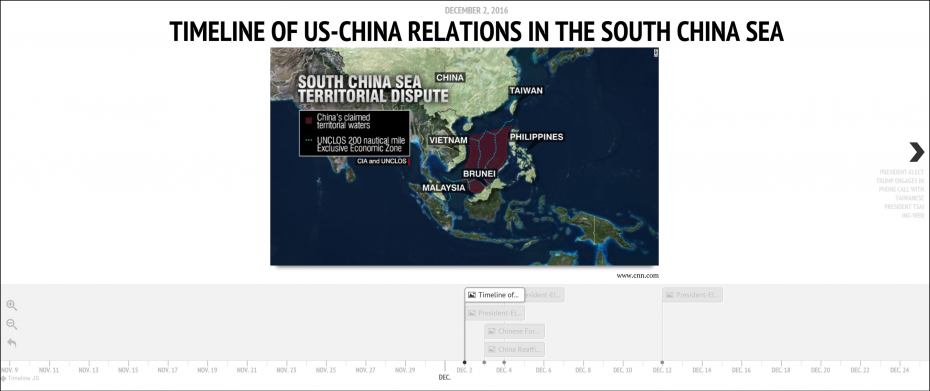
Discourse Insights into Future US-China Relations
How Discourse Analysis Could Help Provide Insight into the Future of US-China Relations. Author | Editor: Dr. Lawrence Kuznar, Nicole (Peterson) Omundson, & George Popp (NSI, Inc). Click here for timeline animation. The future of the US-China relationship seems increasingly uncertain, to say the least. Increased tensions between the two international powers were seemingly ignited […]
Continue Reading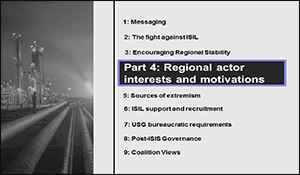
Part 4 Actor Interests and Motivations
SMA CENTCOM Reach-back Reports – Part 4: Regional Actor Interests and Motivations. Author | Editor: SMA Program Office. This is Part 4 of a 9 part series of SMA Reach back responses to questions posed by USCENTCOM. Each report contains responses to multiple questions grouped by theme. At the request of United States Central Command […]
Continue Reading
Part 5 The Various Sources of Extremism
SMA CENTCOM Reach-back Reports – Part 5: Sources of Extremism. Author | Editor: SMA Program Office. This is Part 5 of a 9 part series of SMA Reach back responses to questions posed by USCENTCOM. Each report contains responses to multiple questions grouped by theme. At the request of United States Central Command (USCENTCOM), the […]
Continue Reading
Part 7 USG Bureaucratic Requirements
SMA CENTCOM Reach-back Reports – Part 7: USG Bureaucratic Requirements. Author | Editor: SMA Program Office. This is Part 7 of a 9 part series of SMA Reach back responses to questions posed by USCENTCOM. Each report contains responses to multiple questions grouped by theme. At the request of United States Central Command (USCENTCOM), the […]
Continue Reading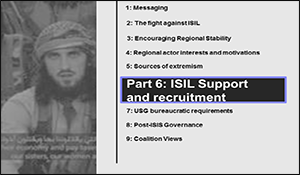
Part 6 ISIL Support and Recruitment
SMA CENTCOM Reach-back Reports – Part 6: ISIL Support and Recruitment. Author | Editor: SMA Program Office. This is Part 6 of a 9 part series of SMA Reach back responses to questions posed by USCENTCOM. Each report contains responses to multiple questions grouped by theme. At the request of United States Central Command (USCENTCOM), […]
Continue Reading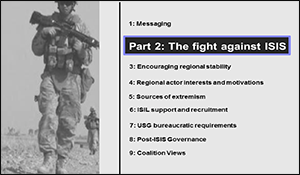
Part 2 Learning From the Fight Against ISIS
SMA CENTCOM Reach-back Reports – Part 2: The Fight Against ISIS. Author | Editor: SMA Program Office. This is Part 2 of a 9 part series of SMA Reach back responses to questions posed by USCENTCOM. Each report contains responses to multiple questions grouped by theme. At the request of United States Central Command (USCENTCOM), […]
Continue Reading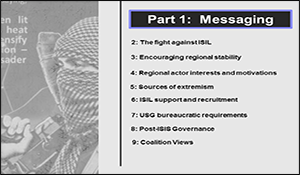
Part 1 A Compendium of Messaging Reports
SMA CENTCOM Reach-back Reports – Part 1: Messaging. Author | Editor: SMA Program Office. This is Part 1 of a 9 part series of SMA Reach back responses to questions posed by USCENTCOM. Each report contains responses to multiple questions grouped by theme. At the request of United States Central Command (USCENTCOM), the Joint Staff, […]
Continue Reading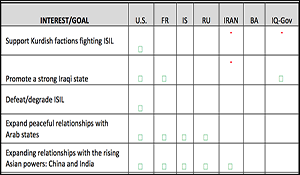
Regional Interests Analysis
Question (S2): In light of their divergent goals and interests, what are the necessary factors that would permit the U.S.-led Coalition, regional stakeholders (including Israel, Russia, and Iran), or jihadist groups to achieve their aims in Iraq? Where do disparate groups’ interests align and where do they diverge? What can the U.S. coalition do to […]
Continue Reading